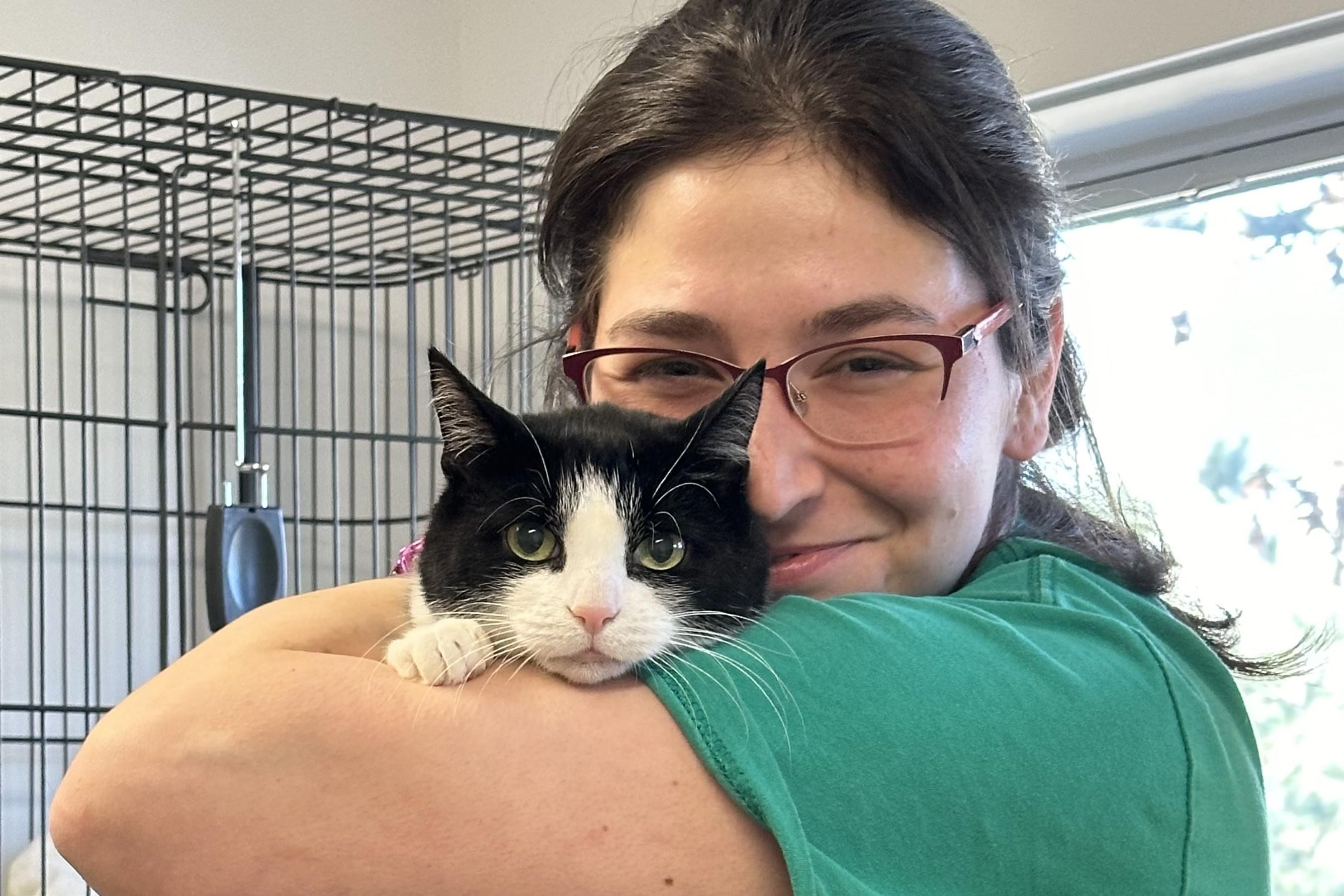ARF Hamptons: Animal Shelter Celebrates 50 Years of Saving Dogs & Cats

Since its founding in 1974, the Animal Rescue Fund of the Hamptons – better known as ARF Hamptons – has become a lifeline for local cats and dogs in need, saving over 30,000 animals. As a no-kill adoption center, ARF is dedicated to providing compassionate care and a second chance to every animal that comes through its doors, no matter how long it takes to find them a loving home.
Now in its 50th year, ARF is continuing its ever-evolving mission to rescue animals and give them a loving home.
Dan’s Papers sat down with Kimberly Nichols, who has worked in the animal industry for more than 20 years and was appointed executive director of ARF Hamptons in 2023.

What issues are affecting shelters most often these days?
What we’re seeing more of right now are surrenders, and they’re mostly driven by financial reasons – people have lost their housing, or the dogs in particular, have pretty complicated medical issues, and the expense is something that the family can’t afford. So it’s heartbreaking and a difficult decision, and it’s one that people are forced into for basically financial reasons.
Is there an issue on the East End, at this time of year, with seasonal residents abandoning their pets when they leave the Hamptons?
That’s how we started. It’s our 50th anniversary this year, and we just honored our founders – Dorothy Wahl, Sonny Schotland and Barbara Hotchkis Posener. Those three women, right after Labor Day, would go around and start collecting the strays, because people would abandon their pets. That is exactly how ARF was founded. They saw a need for that, and it began as a foster-based program, and very quickly they realized they needed a physical building and a shelter, and then, within a decade, realized that, though they were working with veterinarians, the medical component was a huge part of what was needed for these animals. They were transformational women. Our founders had a vision and knew what was needed, and started addressing the issue. We do not see that happen so often anymore, though. We get the calls year round – no big influx after Labor Day.
Do you think that the timing of the increase in surrenders has to do with the pandemic puppy boom?
If you would ask me that question last year, I would have said yes, because then we were seeing more behavioral issues. This year, we’ve got some absolutely sweet dogs that don’t have behavioral issues – they just lost their housing. Last year, we saw more of the behavioral issues of, “I’m with my family, 24/7, and suddenly everybody’s gone, so I’m going to act out.” We’re not seeing that as much this year, although there are always issues with behavior, especially with dogs, and that’s what sets ARF apart. We have the William Rayner Training Center, and we have a number of trainers that are available to work with adopters. We have open hours every week for doctors to be able to call and say, “I’m having this challenge.” And if it’s something that takes more time and attention, then we’re offering scholarships into the classes at the center.

Are any of these health issues commonly seen the kinds that might occur when people perhaps unknowingly purchase a dog from a puppy mill?
We’re seeing the full spectrum. We’re seeing dogs that are purebred dogs that have issues with allergies. We are seeing young puppies with severe orthopedic issues that may or may not have to do with bad breeding. A lot of what we’re seeing, in addition to many orthopedic issues, are cancers.
There is obviously limited space in shelters. With these increases in surrenders, how are you able to accommodate so many animals?
Probably the biggest challenge are the senior dogs and cats. Finding a home for them, it takes a very special person to open up their home and know that they’re going to love an animal, but their time with them is limited. By limited, I mean we just honored Sulu, a dog that was born with a tentacle tumor, and he was given six months to live, and this family took him ome to give him the best six months. He’s still alive, and it’s six years later. He’s doing well. He has seizures, but is just a really great dog, and love makes a big difference. For us, the big one is finding that home where they’re willing to open their doors to a senior pet. These pets are the ones where you put time into it, and you find that person who really understands the dog and meets them where that dog is able to be, and opens up their home. And those are the ones that make every bit of effort worthwhile. Those are the ones where we cheer and we cry together. It’s beautiful when animals like that go home.
Do you have a foster care program?
Yes. So that’s a program that, first there was the pandemic, and then we were under construction, we had pulled way back on the foster program, except for kittens. So this year, we opened it back up, and we’ve had a number of dogs, especially those with orthopedic challenges or health issues, or dogs that have always been in a home, and then because their owner dies or has to give them up, we want to try and get them back into a home environment. ARF is a gorgeous facility. What we have is absolutely state of the art. It’s a wonderful place, but it’s still a shelter. It’s not a home. And often, the foster program leads to adoptions.
What would your advice be to people looking to adopt a pet?
Understand that adopting a pet is a lifelong commitment. You’re committing to them for their life. A puppy is adorable, and if you think you want a particular breed, you need to learn about that breed, because each one has its own characteristics and quirks. It’s important to know that huskies, for example, like to run and they need to be kept cool. It’s important to know that certain breeds may be more reactive to other dogs and prone to guarding — all of that. Once you know the characteristics of your breed, you know that working dogs need a job. That’s what they do, and it makes them happy. So it’s just doing that research that’s the important part. At ARF, our adoption team spends a lot of time talking to the adopters about what the needs are of either that cat or dog and how they’ll fit into the home. And we always do meet and greets with everybody in the home. So if there’s another dog, then we have the dog come here to meet the new dog that’s going into the home. And it may take a few meet and greets for them to figure out if they’re going to get along or not.
ARF Hamptons will host its Stroll to the Sea Dog Walk on Sunday, Oct. 6 from 9 a.m. to noon, with the rain date set for Oct. 5 at Mulford Farm, 10 James Lane, in East Hampton Village. For more details, visit give.arfhamptons.org/dogwalk. Visit arfhamptons.org to learn more about ARF and adopting a pet.



